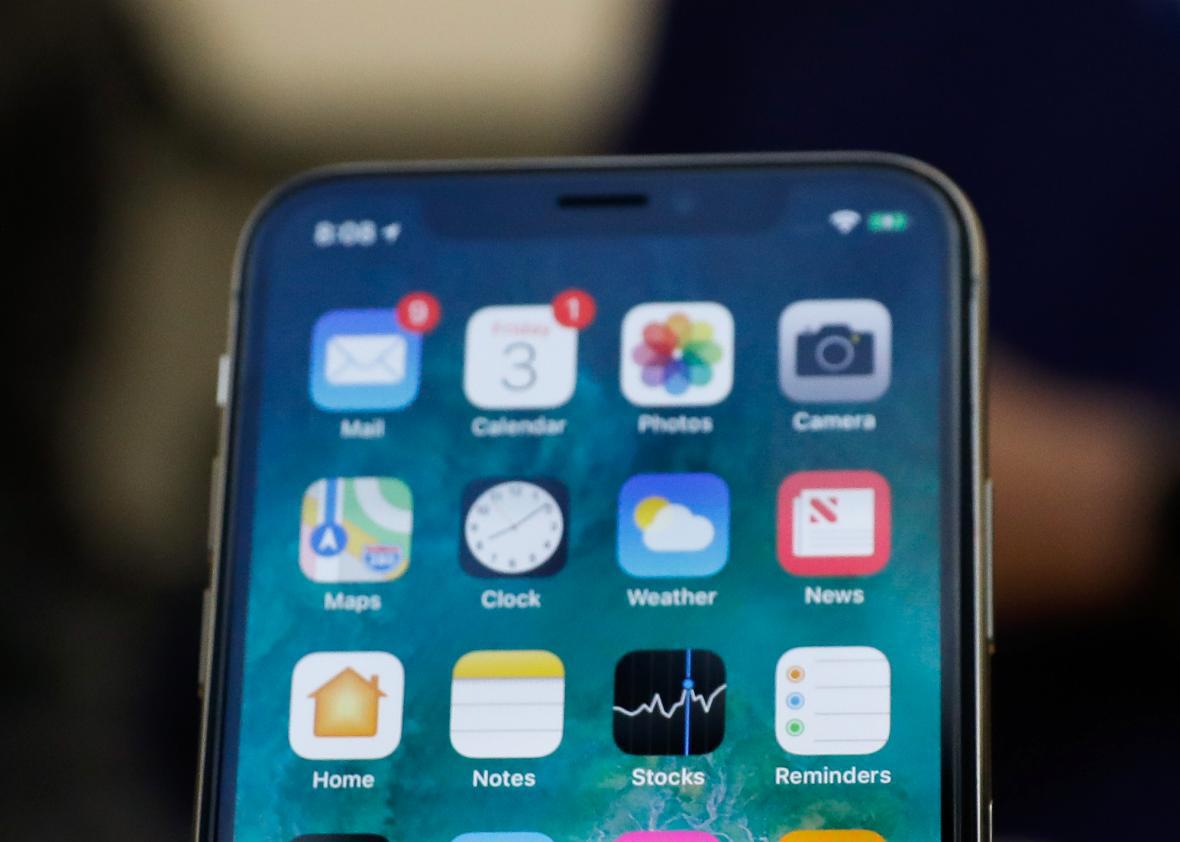The iPhone has never really been known for its durability. Scuffs, scratches, cracked screens—it’s all par for the course. It’s a beautifully designed object, but if you want it to stay pristine, your best bet is to slip it into a strong case, stat.
So it shouldn’t be surprising that the new iPhone X doesn’t score big points when it comes to standing up against the iPhone’s biggest foe: the ground. Drop tests from CNET and SquareTrade show that the phone, which is backed and fronted in glass, is ready to shatter if you drop it from as little as three feet. On top of that, thanks to its OLED screen, the iPhone X’s display is also the most expensive iPhone screen to repair. A new screen will cost you $279, if you don’t opt for AppleCare+ or some other form of phone insurance.
At this point, the phone has been out in the wild for less than a week, and already some poor souls have had the misfortune of discovering all this firsthand.
Unfortunately, the fragility of Apple’s iPhones isn’t a new topic. “Why on earth is Apple’s iPhone so fragile?” one 2014 article asked. In 2016, ahead of the iPhone 7’s launch, Fast Company’s Mark Wilson called the iPhone’s lack of durability its biggest design flaw. Earlier this year, Molly McHugh opined about the flack we get (and give) to friends who continue to use an iPhone after its screen is cracked. According to a SquareTrade study, 47 percent of iPhone owners have cracked their screens, and we’ve spent a collective $14 billion repairing and replacing our Apple handsets.
Apple has taken baby steps to improve the longevity of its handsets. Beginning with last year’s iPhone 7, the iPhone is now water-resistant. This was great news for those of us who have spontaneously hopped in the pool fully clothed, had a phone unsecured in a rear back pocket before a visit to the toilet, or carry a phone during sweaty exercising. But now, once again with a phone fully encased in glass, water resistance feels like a consolation prize.
Despite all of the innovations in materials we see in other smartphones and consumer electronics, Apple steadfastly sticks with aluminum and glass for its iPhones. One is a material known as one of the softest, lightest metals available. The other is a material known to literally crack under pressure. But there are so many alternatives. Soft-touch plastic encasements, like those on some Nexus Android phone models, are terrific: They feel high-quality and are highly drop and scratch resistant because they’re plastic. Carbon fiber is super-strong, lightweight, and looks cool—a number of laptops use carbon fiber for their casing. Ceramic smartphones, like the Xiaomi Mi 5, also look gorgeous and can be incredibly durable, resistant to scratches even when confronted by a drill.
There are three logical reasons for why Apple continues to stick with materials that are so fragile. The first is recyclability: Apple is dedicated to making its products increasingly environmentally friendly and recyclable. Both glass and aluminum are far more recyclable than typically more scratch- and crack-resistant plastics. The second reason seems less likely: economic profitability. If a certain percentage of iPhone owners are replacing their screens each year, that’s more money in the Apple bank, more money for the extended Apple support ecosystem (companies such as iCracked), and for Apple accessory-makers (when you finally give up and buy a case). Perhaps, with its current suppliers and manufacturing systems, it’s also more cost-effective for Apple to stick with these materials. But the third, and perhaps most likely explanation, is that sticking primarily with glass and aluminum is a bow to Apple tradition, to the precedent and design set forth when Steve Jobs was still at the company’s helm. With the rare exception of products like the iPhone 5c, Apple sticks with aluminum and glass because that’s what it’s always done. That’s the signature iPhone design aesthetic.
Risking a cracked screen (or a cracked rear plate) is, for the foreseeable future, one of the risks of opting for the iPhone experience. If you’re not willing to take the chance, you can use a case, or go with a competitor. But Apple knows you’ll just go with a case.
